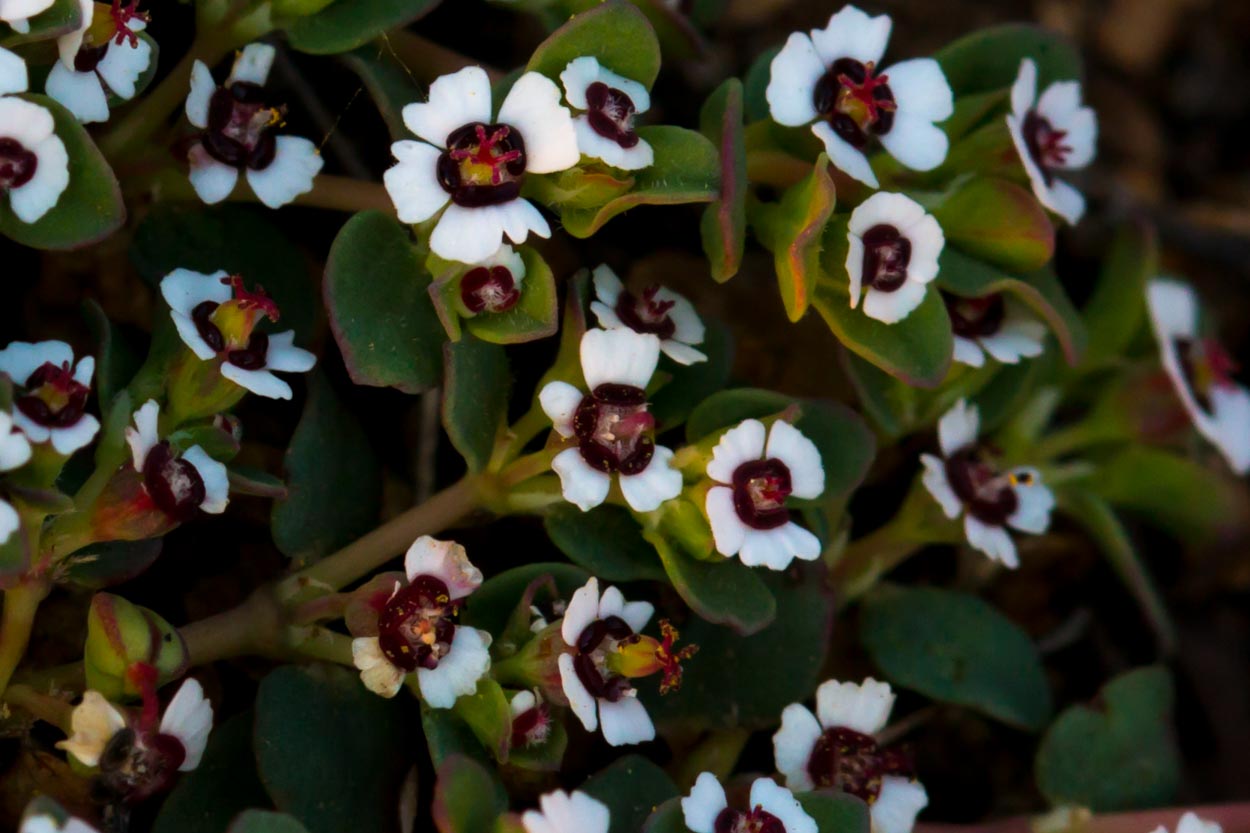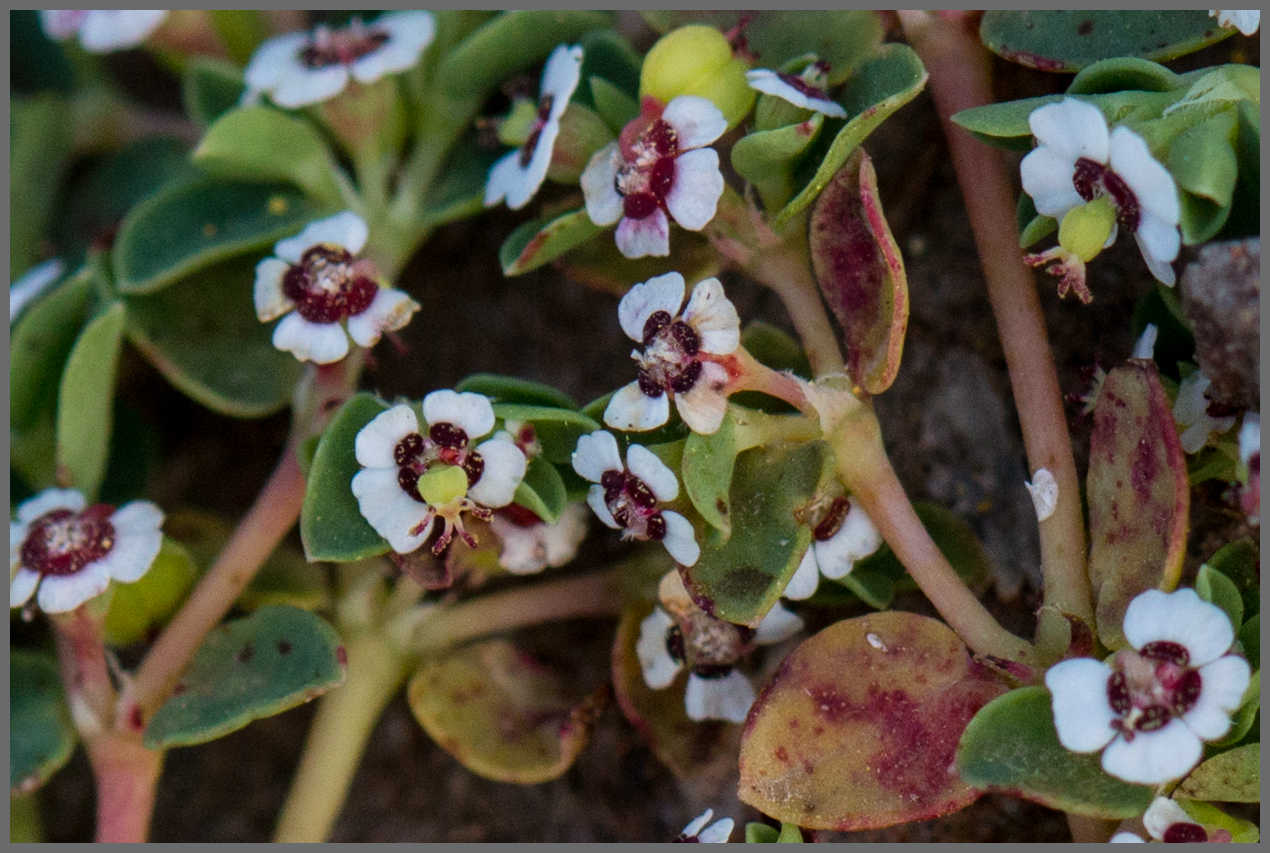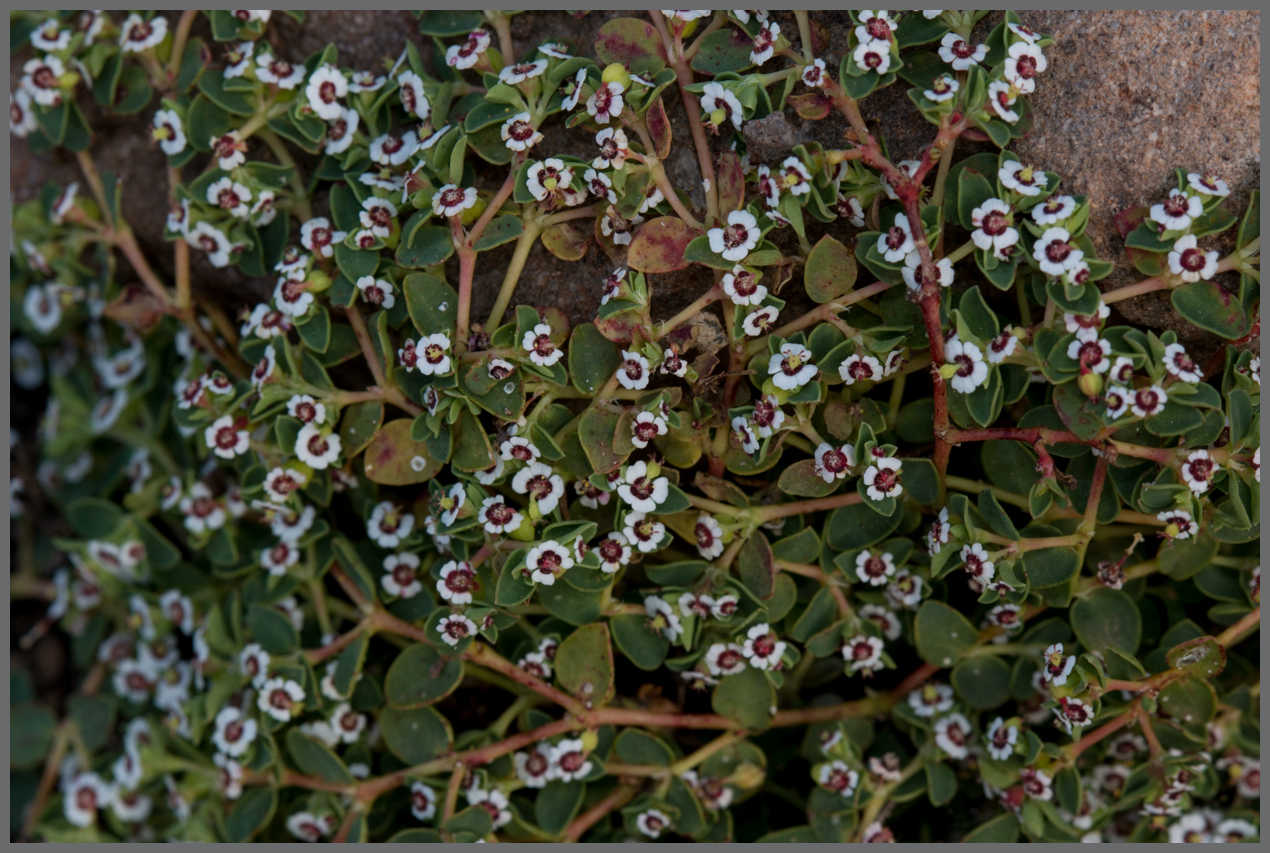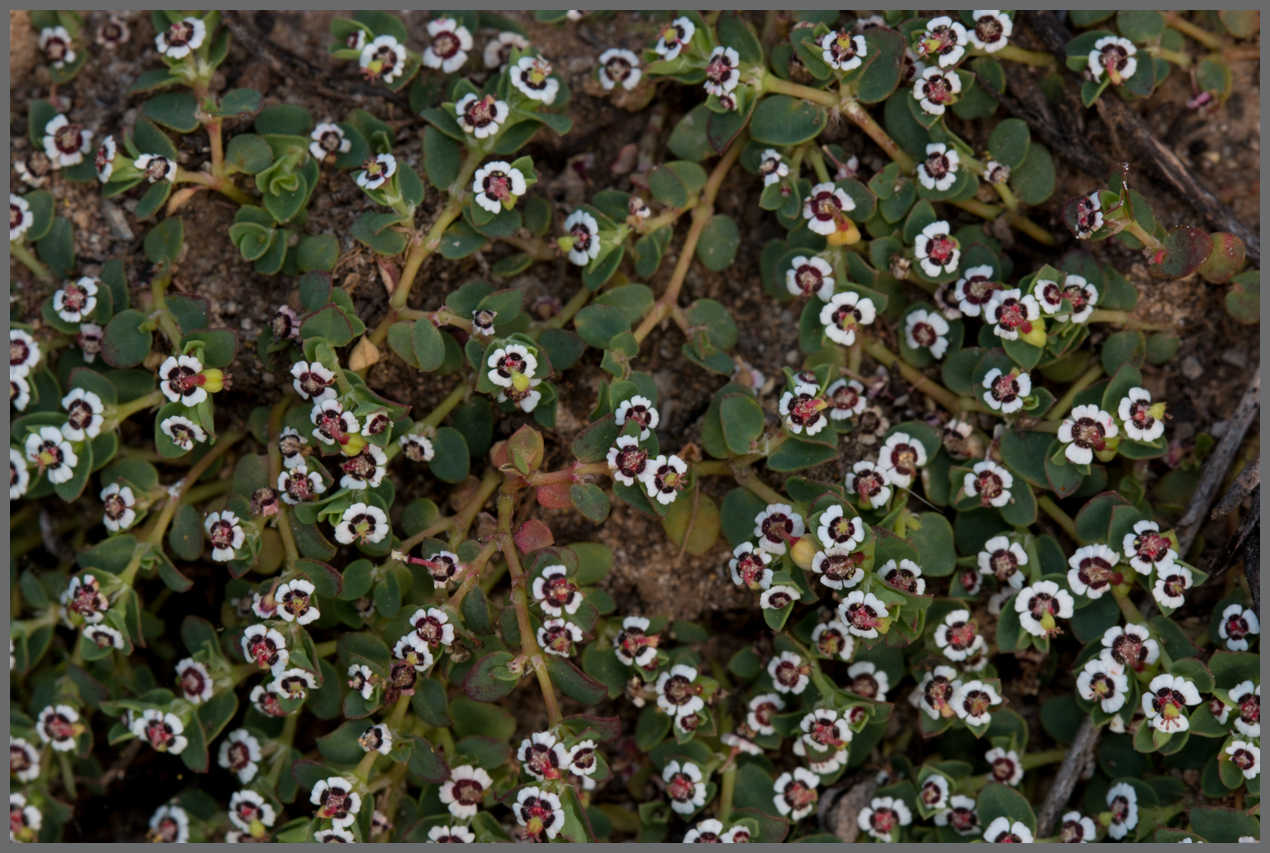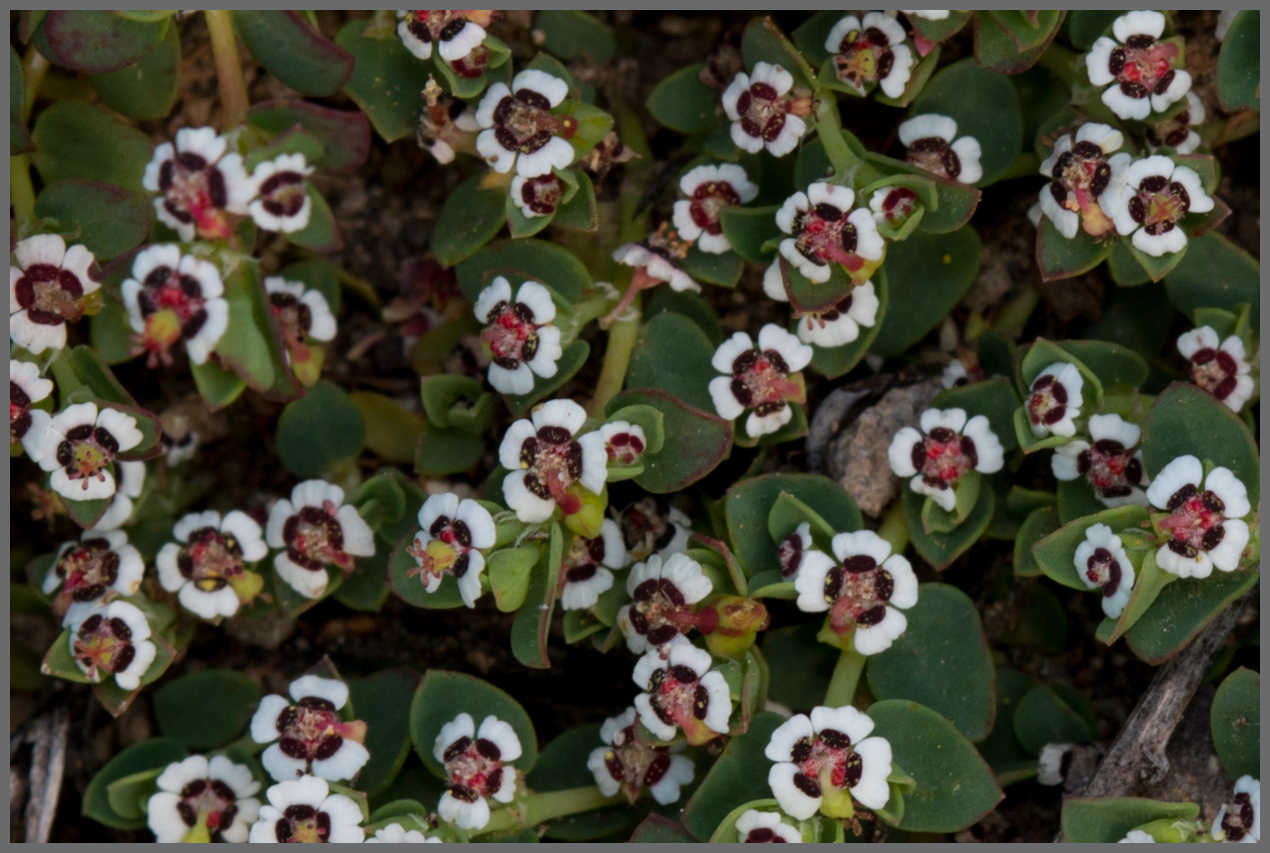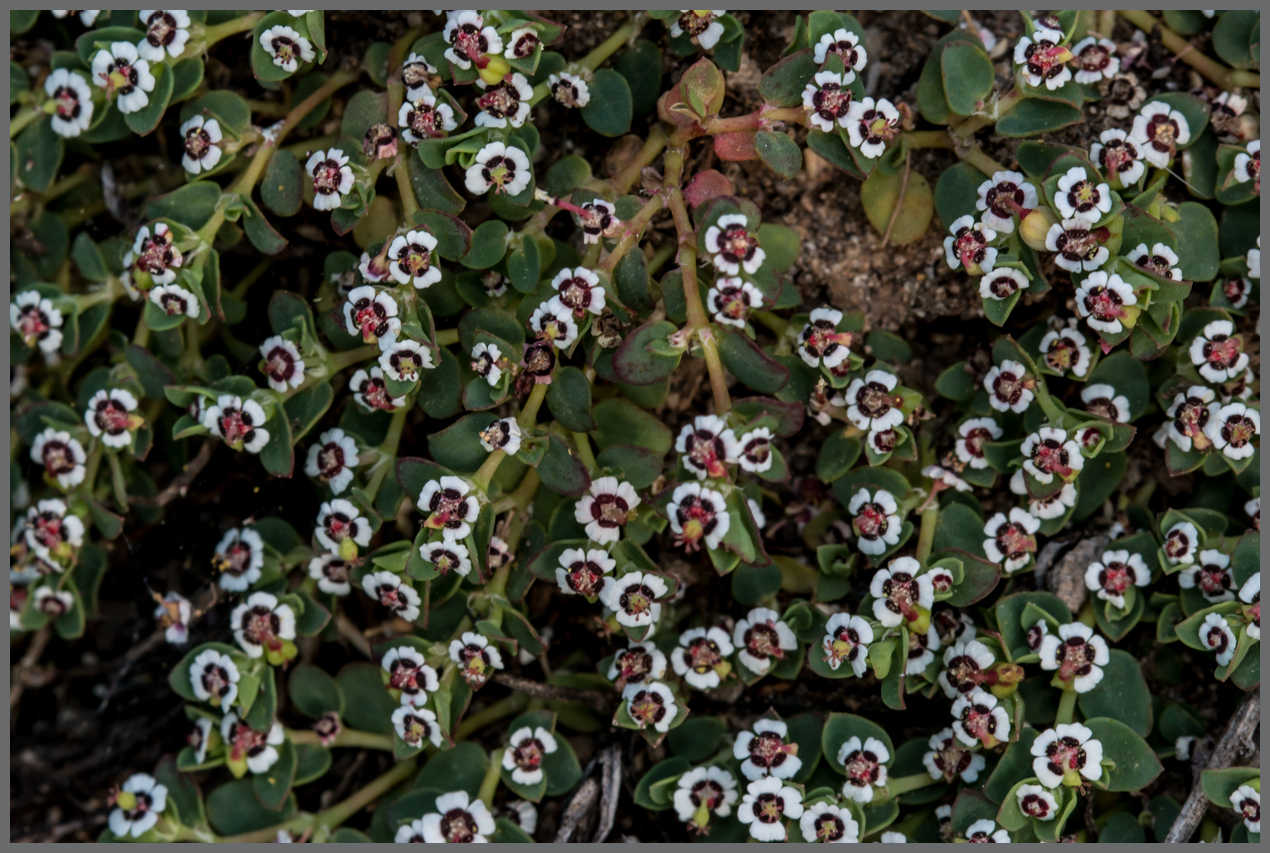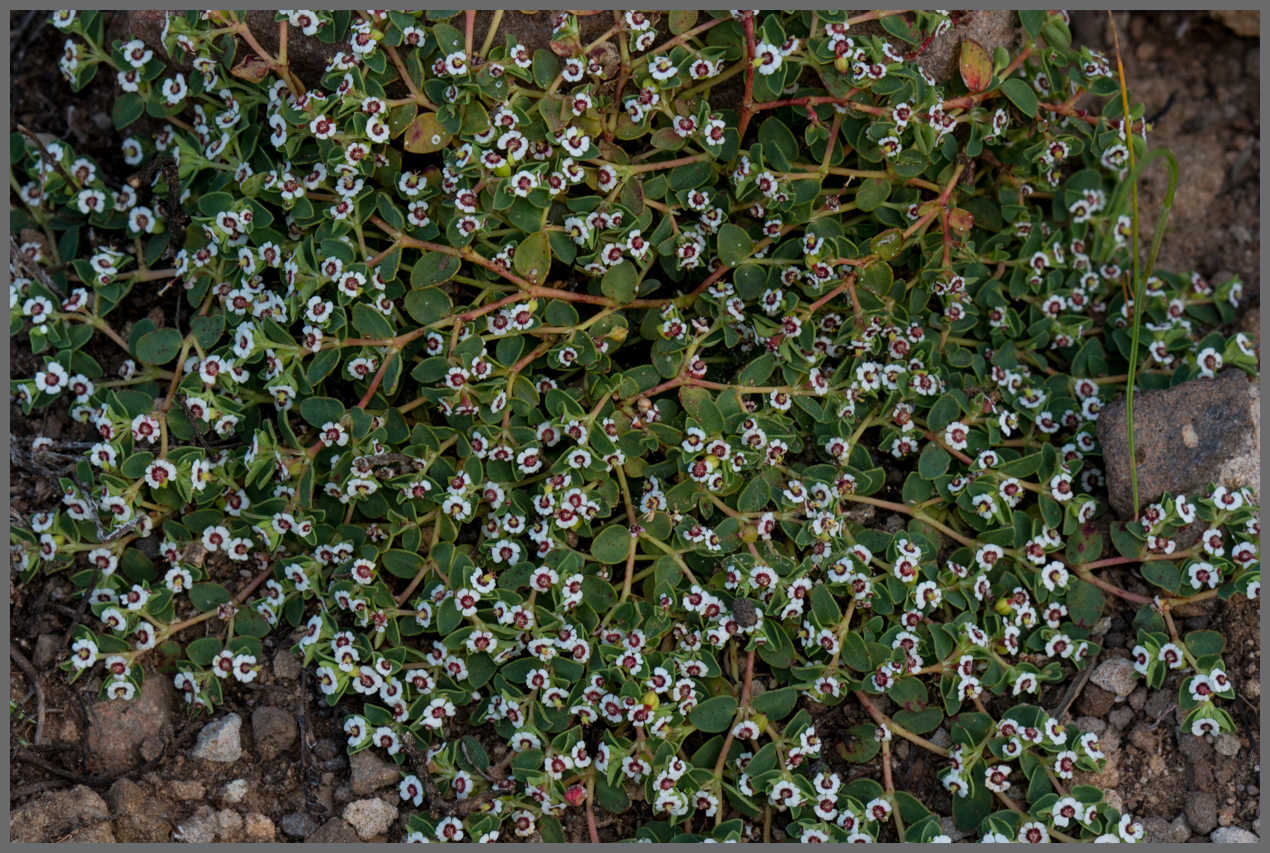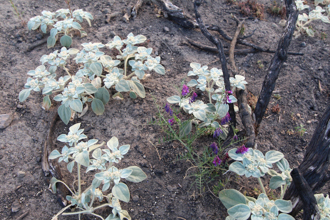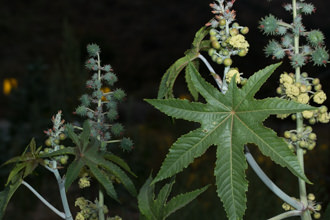Santa Monica Mountains Trails Council Plants Resource Page
Plant of the Month - Rattlesnake Weed

Plant Description
| Common Name(s): | Rattlesnake Weed |
| Scientific Name: | Euphorbia albomarginata |
| Family: | Euphorbiaceae (Spurge) |
| Plant Type: | Perennial |
| Size: | 2 to 3 inches high and 12 inches diameter |
| Habitat: | dry slopes and fields |
| Blooms: | April to November |
| Fire Response: | Germinate from Seed |
Euphorbia albomarginata (formerly Chamaesyce albomarginata) is commonly called Rattlesnake Weed or Sand Mat and blooms nearly year-round (but commonly April to November) and is prostrate, meaning it grows flat on the ground. This probably allows it to access moisture in the form of dew and thus remain green well into the dry fall months of the Southern California climate. It is common near cultivated fields or on wide trails, dry, sandy and rocky places where other plants can't usually survive and thus don't crowd it out.
The plant forms spherical mats on the ground with many-branching stems. The tiny leaves, no more than a quarter-inch long, form at the end of short stems are heart-shaped or oblong, sometimes with white or red edges. The flowers are solitary from leaf axils, cup-like, maroon at the base with white petal-like margins or bracts (these are not true petals). Inside the cup, a single female pistillate flower is accompanied by up to 30 male staminate flowers. Typical of other members of the Euphorbia family, it has a white milky sap, known to be poisonous.
Another species in the genus Chamaesyce, the polycarpa, commonly called Golondrina or Prostrate Spurge, very closely resembles Rattlesnake Weed. The main difference is that Golondrina has tiny hairs on leaves, stems and seed capsules while Rattlesnake Weed is hairless.
Name Origin:Link to Calfora.net - the best source of this information
Euphor'bia: named for Euphorbus, Greek physician of Juba II, King of Mauretania. The word Euphorbus derives from eu, "good," and phorbe, "pasture or fodder," thus giving euphorbos the meaning "well fed."
The former genus name Chamaesyce is an ancient Greek name that refers to the prostrate or ground-lying growth habit. The species name albomarginata means white-margined, referring to the flower bracts. According to folklore, the plant was thought to help treat rattlesnake bites when pounded to release its milky sap and laid wet on the wound.
Web Pages Cited:Euphorbia albomarginata, https://en.wikipedia.org/w/index.php?title=Euphorbia_albomarginata&oldid=693531574 (last visited Mar. 14, 2017).
Contributed by Liz Baumann
Rattlesnake Weed - Originally featured: November 2012
Last modified: May 12 2017 16:41:10.
References:
Wildflowers of the Santa Monica Mountains, by Milt McAuleyFlowering Plants: The Santa Monica Mountains, Coastal and Chaparral Regions of Southern California, by Nancy Dale
Chumash Ethnobotany: Plant Knowledge Among the Chumash People.., by Jan Timbrook

